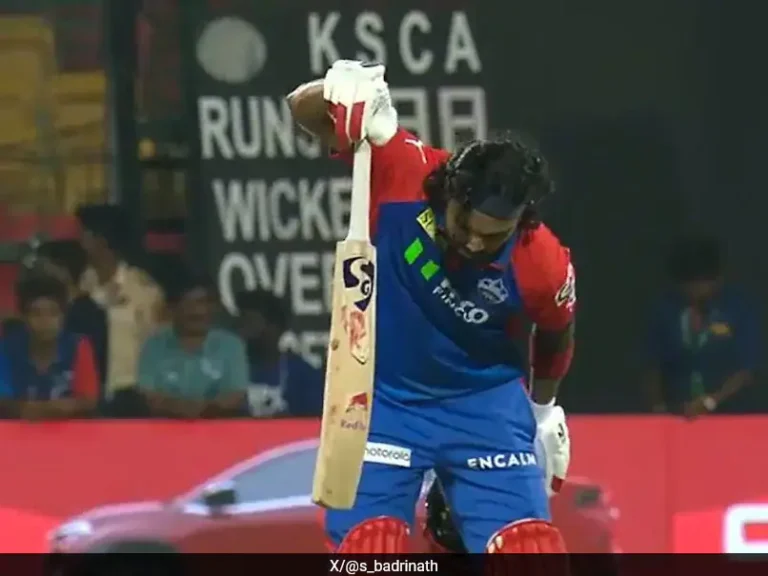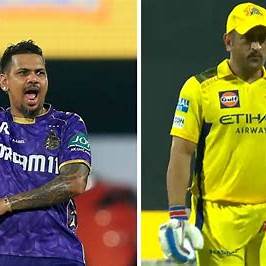
Image Credit gettyImages
The impact of dew on white-ball cricket has been a long-debated topic, often influencing match results. Coaches and players frequently voice concerns about its role in reducing grip and aiding batting conditions. Recently, Lucknow Super Giants’ head coach Andy Flower and Kolkata Knight Riders’ spinner Varun Chakaravarthy weighed in on the discussion, particularly regarding ball changes due to excessive dew and the declining relevance of saliva in modern-day cricket.
Ball Changes Due to Dew – A Growing Practice
Andy Flower acknowledged that teams often seek ball changes when excessive dew makes it difficult for bowlers to grip the ball. While this practice is not officially mandated, umpires tend to allow a ball switch when the fielding side demonstrates a legitimate struggle with control. Flower stated that dew significantly alters the conditions, putting bowlers at a disadvantage, particularly spinners and pacers who rely on seam movement.
“In some matches, the ball becomes so damp that it’s nearly impossible for bowlers to execute their skills effectively,” Flower said. “While a ball change is not always guaranteed, umpires often allow it when they see the impact it’s having on the game.”
Varun Chakaravarthy, a key spinner for Kolkata Knight Riders, shared a similar sentiment. He noted that while bowlers develop techniques to counteract dew—such as applying extra grip-enhancing substances and adjusting wrist positions—the challenge remains significant.
“The ball becomes incredibly difficult to control under heavy dew,” Chakaravarthy explained. “It skids on faster, and spinners lose their natural turn. A ball change can restore some balance, but it’s not a foolproof solution.”
The discussion around this practice has grown in recent IPL seasons, where evening matches often witness a stark contrast between first- and second-innings conditions. Dew reduces swing, negates spin, and makes gripping the ball nearly impossible, leading to inflated scores and high-scoring chases.
Saliva Ban – No Longer a Concern?
The use of saliva to shine the ball was a long-standing cricket tradition, helping bowlers generate swing. However, the COVID-19 pandemic led to its official ban by the International Cricket Council (ICC), forcing teams to rely solely on sweat to maintain the ball’s condition. While some initially worried about its impact on bowlers, Flower and Chakaravarthy believe that the rule has had little effect in modern limited-overs cricket.
“Saliva is largely irrelevant in T20 cricket,” Flower said. “It was more useful in red-ball formats where reverse swing plays a crucial role. In white-ball cricket, where the ball is changed frequently and swing is minimal after a few overs, the absence of saliva has not been a major factor.”
Chakaravarthy echoed this view, emphasizing that bowlers have adapted well. He pointed out that most bowlers now rely on tactical variations, slower deliveries, and accuracy rather than conventional swing.
“I don’t think saliva use matters much anymore,” he said. “We’ve learned to work with sweat, and honestly, the ball doesn’t swing for long in T20s anyway.”
The shift away from saliva has led to new approaches in ball maintenance. Teams now focus on strategies such as polishing one side with sweat, using controlled seam positioning, and adjusting their field settings to accommodate reduced swing.
Conclusion – Adapting to Changing Conditions
As cricket continues to evolve, bowlers and teams are adapting to new challenges. Dew remains a major factor in evening matches, with ball changes becoming an unofficial but accepted practice to ensure fairer conditions. At the same time, the saliva ban has not significantly impacted white-ball cricket, with players successfully adjusting to alternative ball management methods.
With tournaments like the IPL frequently influencing global cricketing trends, these developments highlight the constant evolution of the game. While bowlers continue to battle changing conditions, innovation and adaptability remain key to maintaining balance between bat and ball.

